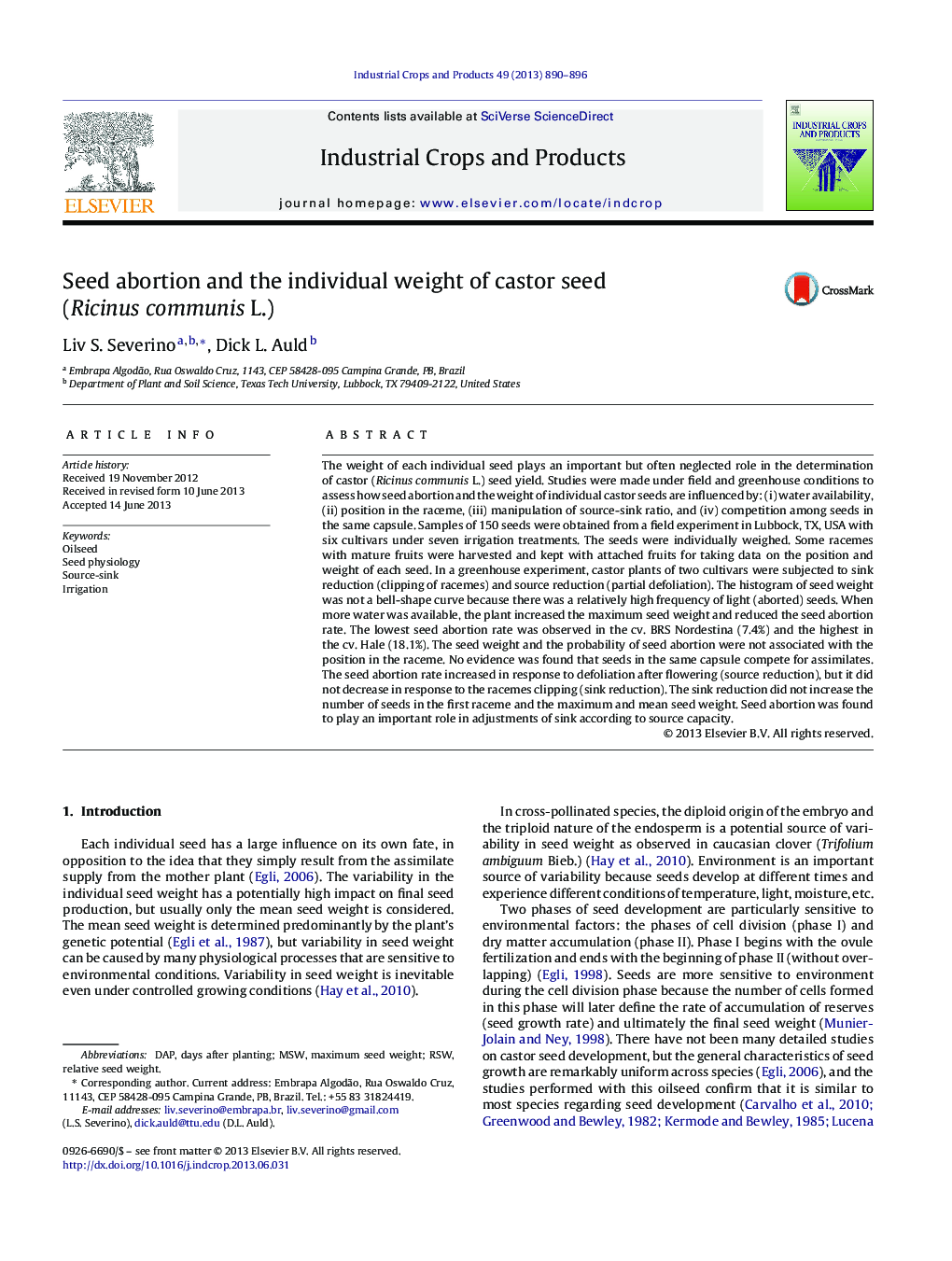| Article ID | Journal | Published Year | Pages | File Type |
|---|---|---|---|---|
| 6377296 | Industrial Crops and Products | 2013 | 7 Pages |
Abstract
The weight of each individual seed plays an important but often neglected role in the determination of castor (Ricinus communis L.) seed yield. Studies were made under field and greenhouse conditions to assess how seed abortion and the weight of individual castor seeds are influenced by: (i) water availability, (ii) position in the raceme, (iii) manipulation of source-sink ratio, and (iv) competition among seeds in the same capsule. Samples of 150 seeds were obtained from a field experiment in Lubbock, TX, USA with six cultivars under seven irrigation treatments. The seeds were individually weighed. Some racemes with mature fruits were harvested and kept with attached fruits for taking data on the position and weight of each seed. In a greenhouse experiment, castor plants of two cultivars were subjected to sink reduction (clipping of racemes) and source reduction (partial defoliation). The histogram of seed weight was not a bell-shape curve because there was a relatively high frequency of light (aborted) seeds. When more water was available, the plant increased the maximum seed weight and reduced the seed abortion rate. The lowest seed abortion rate was observed in the cv. BRS Nordestina (7.4%) and the highest in the cv. Hale (18.1%). The seed weight and the probability of seed abortion were not associated with the position in the raceme. No evidence was found that seeds in the same capsule compete for assimilates. The seed abortion rate increased in response to defoliation after flowering (source reduction), but it did not decrease in response to the racemes clipping (sink reduction). The sink reduction did not increase the number of seeds in the first raceme and the maximum and mean seed weight. Seed abortion was found to play an important role in adjustments of sink according to source capacity.
Related Topics
Life Sciences
Agricultural and Biological Sciences
Agronomy and Crop Science
Authors
Liv S. Severino, Dick L. Auld,
